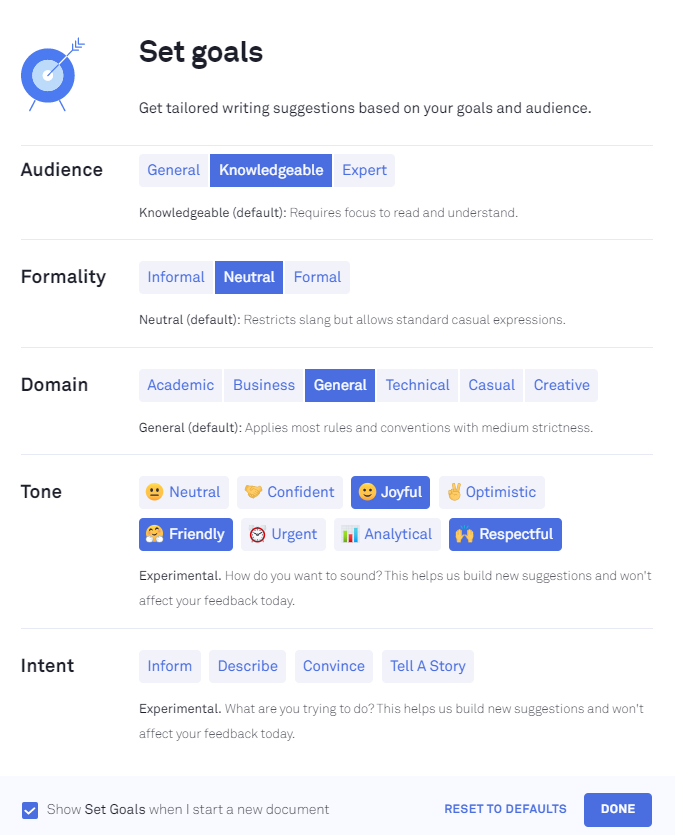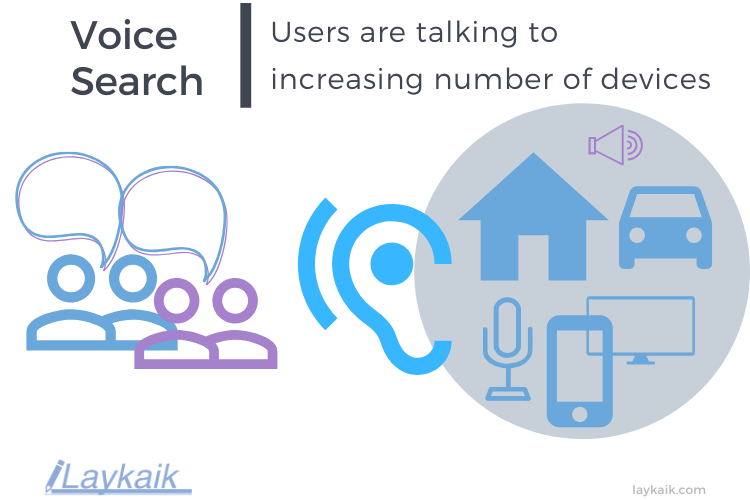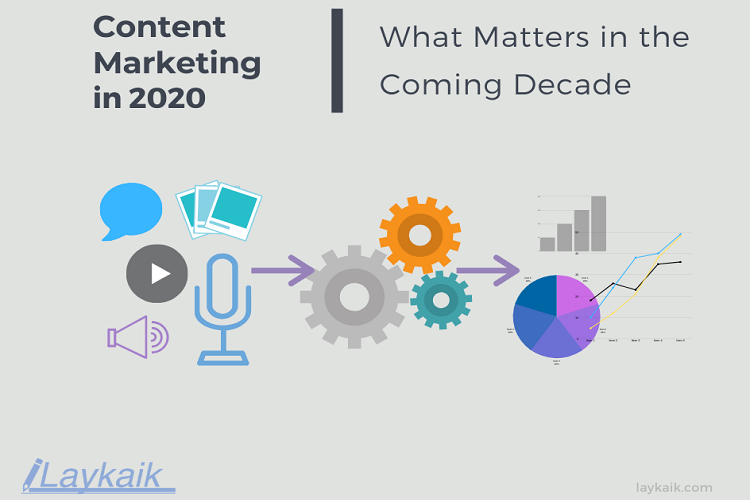Content Marketing in 2020: What Matters in the Coming Decade
Content marketing in 2020 is going to be different in many ways. At the start of the previous decade (the 2010s), content rephrasing/spinning tools were among ‘awesome techs’ for content marketers. Such tools saved time and effort, which could be used in applying other tricks like ‘senseless backlinks on keywords’ to impress the search engines. As we head into the decade of 2020, the situation is way more sensible. While unique content holds high worth, content marketers are repurposing it across formats for optimum traction.
A decade ago, content formats like podcasts, infographics, and 5-second videos seemed beyond the thoughts of most content marketers. Even content marketing seemed ‘not-so-worthy’. From a luxury to a necessity, content marketing has grown at an exorbitant speed, and we can expect it to keep growing with the coming year. However, the growth will have a different pace and in different directions.
In this article, we are considering the fundamental changes that we are expecting in content marketing in the 2020s:
- Machines Are The Next Content Curators
- Voice Search Will Change The Search Game
- Data Privacy Laws Will Influence Marketing Expenses
- Faster Internet/5G Will Change Content Marketing in 2020s
1. Machines Are The Next Content Curators
The essential requirements of digital content are text, image, video, and audio. If you can build a story using them, your content curation is sorted. Series of experiments and their results have been not only been optimistic, but clear as the day.
“Computers don’t cry during sad stories, but they can tell when we will.” – Mckinsey Insights, 2017
Talking about the text, Grammarly, one of the most common proofreading tools, can detect your content on various goals for the audience you are targeting, how formal the piece should be, target domain, tonality, and intent. That’s what we can do with an already-written piece of content in the decade of 2010. Heading into the 2020s, you can feed the information to the machines enabled with artificial neural networks (ANNs) to add an emotional arch in storytelling. Evolving from reading text from video scripts and books, machines are soon moving towards writing similar types of content pieces in the coming time – and across different languages.

If we shift the attention to the graphical segments of the content, i.e., images, the adoption of machines in curating or finetuning is even more common than textual content. Here are some examples that you might have used:
- Microsoft PowerPoint offers design suggestions as you add elements on the slide. These suggestions are beyond the basic background templates as the suggestions keep changing to provide better placement of different elements (textual as well as graphical).
- Google Photos and several other photo tools are empowering the user by improving the image qualities by reducing the human-effort to as less as merely approving the changes. These machine-based apps are suggesting the right filters for images along with more precision in fixing the light, contrasts, focus depth, and a lot more.
- AI-powered emojis (and there are several other names that different apps and phone brands are giving it) are for real and vastly adopted thingy – at least among the millennial generation. With a certain level of recognition of your face, it can generate a set of expressions in the form of emojis for you. So, machines are expressing emotions while keeping graphics interesting.
Here, the moral of the story is the artificial intelligence has already made its space among users for creating and editing images. What’s even better is that it is learning and improving. Once you fix basic templates, brand colors, and stories, you can expect the machine to build infographics around it. Now, it’s just a matter of time when businesses also go heavier with their marketing requirements. Given that the digital definition of video remains moving visual images, you can expect machines to curate videos for you as soon as images get the mainstream adoption.
The podcast is one of the most popular audio formats that has grown in recent years. Interestingly, automation with podcasts is already significant. There are several tools available online that repurpose your blogs or other formats of text into audio. Such text-to-speech tools enable marketers to generate podcasts within seconds of publishing a text. As textual content generation go automated, the audio format may not lag. With machines being able to understand and adapt to the nuances of changes between text and audio, the curation process will go even smoother.
2. Voice Search Will Change The Search Game
Where can we use voice interactions with machines? Almost everywhere – while we are always in the touching distance of our mobile phones (enabled with Siri, Ok Google, and more), there are virtual assistants (Alexa Echo, Google Home, etc.) listening to you all the time in the home. Then there are cars, TV, lighting, and temperature controllers that are all ears for you. Along with availability across platforms, voice searches are easier to learn and quicker to perform as compared to typing the search query.

A PwC study says youngsters (18-24- year old) are leading when it comes to adapting to the voice search. It also stats, while youngsters adapt quickly, a senior generation (25-49-year old) are the ones using it heavily. Undoubtedly, voice search is going to grow humongous in the coming decade. Now how does it change the game for marketers?
Machines are trying to hold meaningful interactions by better understanding the user’s intent and meaning – which is distinctively different from the traditional ‘keyword-dependent’ search. Content marketing in 2020 should focus on aligning these changes. Marketers need to up their game and optimize the content with the agenda of impressing the machines as well as user experience. As brands will start content evolution to prepare for voice search, (no offenses to Google Search but) the search market may not have the monopoly of a single player.
3. Data Privacy Laws Will Influence Marketing Expenses
Data grew exponentially in the 2010 decade, and it became so valuable that ‘data is the new oil’. Data helps marketers in personalized targeting with marketing. To gain the most fruitful results, marketers are leveraging it in almost all possible means. The data privacy regulations lagged to keep pace with technological advancements, which led to this massive growth in data. However, authorities have realized the delay and they are trying to make up for it.
The last half of the previous decade witnessed marketers experiencing panic attacks when the European Union implemented the General Data Protection Regulation (GDPR). More than a year since its implementation, marketers are now looking at it as a positive step. With many more countries looking to follow a similar data privacy policy in their regions, marketing across the globe is going to transform. With greater good of responsible data usage, there comes the load of expenses.
Sanuj Das, a managing associate at Subramaniam & Associates, explained the impact of such regulation to Laykaik as “Under the new legislation, marketers may no longer have access to a common directory of customers to send bulk e-mails, newsletters, etc. Similarly, marketers may no longer be at liberty to exchange personal data of an individual with third parties. This may eventually increase the cost of advertising/marketing and thereafter, trickle down into the cost of providing a service or product.
“The brunt of the transformation may have to be borne by small and medium enterprises owing to the cost of implementing a technological framework to keep a check on privacy-related issues. This may mean cutting down on ‘free’ content/services used to attract customers. Companies may end up losing a significant ‘potential’ client base before climbing the privacy curve while trying to provide a quality product or service.”
The good news is there is a bright side to it as well. While the expenses might grow, these regulations push marketers to utilize the data more appropriately. He continued, “Marketers will be the key to unlock a Pandora’s box of clientele for businesses. Identifying the key demographic, channeling the right content towards such demographics, and maintaining steady traffic of such content may ensure an increase of the ‘relevant’ customer base and, eventually, increase sales for a company.”
Multinational firms will have another major challenge to face when they comply with regional regulations (and their updates) as they execute different operations in different regions. Sanuj said, “For instance, a typical situation that may be faced is when an Indian citizen consents to use of personal data by an Indian subsidiary of a US-based company for a product or service offered in the US – where the personal data of the customer is stored in the US – and later withdraws such consent. The questions that arise are, would the applicable laws in the US make it mandatory for the US parent company to delete all personal data collected for such individuals? Is the Indian subsidiary liable? If so, to what extent? Once implemented, the Personal Data Protection Bill, 2018 may hold the answers to these questions.”
In the 2020s, we will step in the world where almost every device will be listening to the user and tracking their activities. So, marketers will have even more data than what we have right now. How marketing strategists prepare themselves to adapt to the legal compliance of collecting and utilizing the information is going to make or break the situation for them.
4. Faster Internet/5G Will Change Content Marketing in the 2020s
Mobile marketing emerged as the biggest achiever of the previous decade. As mobile apps kept growing revenue share for businesses across verticals, industries, and regions, the app marketing gained unprecedented attention and results.
Let’s glance at the key reason for it. App installs on the local device and saves some content on it. With certain permanent (and mostly heavier) content already on the device, the user can access the dynamic data faster than the website. Hence, user experience is impressive. Meanwhile, the app owner gets better access to several device permissions, user data as well as cookies.
Moving to the era of 5G, faster internet will mean data load time will be insignificant. There is a good chance for the existing devices to continue with the installed app, but new device users are not likely to go through the pain of app install when they can get the same experience over the website. Meanwhile, users will find it easier to breathe if they share fewer device permissions. Are mobile marketers going to face a job crisis because of it? Maybe, unless they change their marketing strategy to improve personalization.
For starters, they can expect the users to perform the desired action within the platform in which they are interacting with the ads. Most of the leading ad publishers (including social media) are offering in-app browsing where users can even make purchases. Moreover, faster internet gives you marketers the opportunity to contextual targeting. Adopt the right tools with fast information processing to identify user needs and intent to make the best of available sped. The augmented reality in advertising, when detects context with data various devices (IoT), real-time analytics, and user point, can enable businesses to target the customers on a personalized level.
We can even expect advertising content to go more interactive with the support of faster connectivity, while plain and sober display ads may take a backseat. With interactive advertising, we mean advertisers can deploy programming to engage the users in a gamification model.
Wrapping Up: Content Marketing in 2020
Other major changes that we may witness in content marketing over the coming years are authentication of the content. Faster networking has resulted in spreading false and misleading information (especially over social media). I believe there are going to have a manual, as well as machine-based approvals before a piece of content, go viral. E-A-T algorithm by Google has been helping the search engines in ranking the content on the basis of Expertise, Authoritativeness, and Trustworthiness can play a key role in defining how social media channels can look after helping the right information to cascade.
Updates on modus operandi of Content Management Systems (CMS) is a much-awaited wish among the content marketers. We have been relying on plugins of various sorts for different needs, which repeatedly causes issues with performance, security, and simplicity. As content marketers are focusing more on data, analytics, re-purposing, and paid ads, it is high time that the CMS brings then under the same umbrella. So, content marketing in 2020 more about strategies and execution than switching between the tools.
The adaption to these changes may be slow as most of them bite heavily on the budget. We might see the big firms switching to them early and setting the examples for others to follow.
What’s your take on this piece on content marketing in 2020? What do you feel about the points mentioned in this article? Are you excited about them? Share your opinion in the comments below.

Nishant Kadian is a content marketer with more than 6 years in the digital marketing industry. He is currently working with Ameyo. He has been associated with cloud tech leaders, like Affle, ACE Cloud Hosting, Servetel, and TheRealPBX in the past.

Interesting take the future of content marketing. I hope you can share it proudly in 2030 and say that you saw it coming.
Do you think people will stop posting the comment in webpages and blogs by then?
Well, I am hope they don’t. But people are growing lazy and most people are doing it for the sake of backlink. I hope the quality of comments remain, instead of as a task.
You really make it appear so tempting for content marketers. I thought this topic to be really one thing that I feel I’d never understand. It seemed too complicated and extremely wide for me. But I can consider making a career here now. Keep posting!
Appreciating the time and effort you put into your site and in depth information you offer.
It’s awesome to come across a blog every once in a while that isn’t the same out of date rehashed material. Fantastic read on content marketing!
I’ve bookmarked your site and I’m including your RSS feeds to my Google account.
I’m interested in fashion and I want to start a blog but I have no idea where to start or how to get people interested in my blog. Any ideas welcome..
Hey Kattesenge,
We can definitely help you with that. Please share more details on reach@laykaik.com to discuss more on the content marketing possibilities for you.
Excellent article Nishant! In this era of machines, no wonder marketing professionals need to rethink the way they do content marketing. For example, Google has recently implemented the BERT technology/update to their search which aims to understand the language and context of queries particularly for conversational searches. This presents an opportunity for content marketers to write such content that is more human friendly, have a clear structure, and conversational with the clearly defined context.